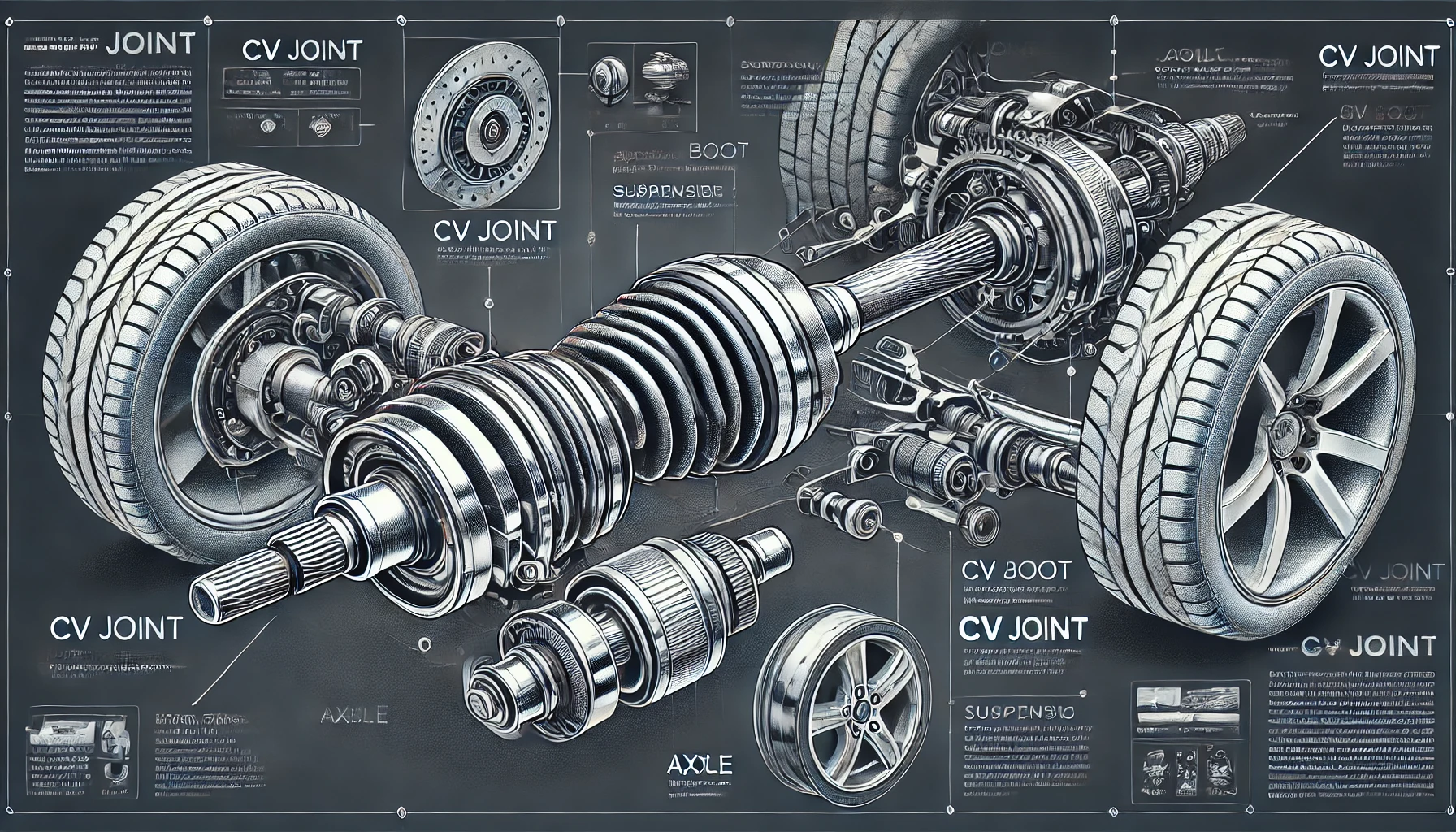What Is a cv joint?
A cv joint, or constant velocity joint, is a crucial component of modern vehicles. It ensures smooth power transfer from the engine to the wheels, enabling a consistent speed regardless of the wheel’s position. Found in front-wheel-drive and all-wheel-drive vehicles, these joints allow the drivetrain to maintain flexibility and efficiency. Without it, maneuvering corners or uneven surfaces would be challenging.
Types of cv joints
Understanding the types of it is essential for identifying their purpose and importance. There are two primary types of cv joints: the Rzeppa joint and the tripod joint. Each type caters to specific needs and vehicle configurations.
- Rzeppa Joint: Often found in front-wheel-drive vehicles, this joint ensures high flexibility. Its design accommodates angular motion, making it ideal for navigating tight corners.
- Tripod Joint: Commonly located on the inner side of the axle, this joint offers linear flexibility. It is designed to handle changes in the length of the axle during suspension movement.
Both types work in tandem to maintain stability and seamless operation of the drivetrain system.
How Does a cv joint Function?
It operates by transferring torque from the transmission to the drive wheels. It compensates for the up-and-down motion of the suspension and the rotational motion of the steering. Encased in a protective boot filled with grease, it remains lubricated and shielded from contaminants. This design ensures durability and reduces wear and tear.
Signs of a Failing cv joint
Recognizing the symptoms of a failing it is vital for vehicle maintenance. Ignoring these signs could lead to severe damage. Common indicators include:
- Clicking Noises: A clicking sound during sharp turns often signals a worn-out it.
- Grease Leaks: A torn boot can cause grease to leak, leading to joint deterioration.
- Vibration While Driving: Excessive vibrations can indicate a damaged it.
If any of these symptoms are noticed, immediate inspection and repair are recommended.
Causes of cv joint Failure
Several factors contribute to the failure of a it. One common cause is the wear and tear of the protective boot. Over time, the boot may crack or tear, allowing dirt and debris to enter and compromise the joint. Additionally, aggressive driving, such as sudden acceleration or sharp turns, can strain it, leading to premature wear.
Importance of cv joint Maintenance
Regular maintenance of it ensures its longevity and optimal performance. The following practices can help in maintaining a healthy this:
- Routine Inspections: Checking the condition of the cv boot regularly prevents dirt and debris from causing damage.
- Timely Grease Replacement: Ensuring the joint remains lubricated minimizes friction and wear.
- Professional Repairs: Addressing minor issues promptly prevents costly repairs in the future.
Replacing a Damaged cv joint
Replacing a damaged cv joint involves several steps. While some vehicle owners may opt for DIY repairs, professional assistance is often recommended to ensure precision. The general process includes:
- Lifting the Vehicle: Using a jack to access the damaged area.
- Removing the Old Joint: Detaching the faulty cv joint from the axle.
- Installing a New Joint: Securing the replacement it and ensuring proper alignment.
- Reassembling and Testing: Reassembling the components and testing for smooth operation.
Cost of cv joint Repairs
The cost of repairing or replacing it varies depending on the vehicle model and the extent of the damage. On average, repairs can range from $150 to $850. Factors such as labor charges, parts quality, and location also influence the overall cost.
Common Myths About cv joints
Several misconceptions surround it, often leading to confusion among vehicle owners. Addressing these myths helps in making informed decisions:
- Myth: It never require maintenance.
- Fact: Regular maintenance prolongs the life of the joint.
- Myth: Only old vehicles experience it failure.
- Fact: Even new vehicles can face issues if not maintained properly.
Advantages of a Well-Maintained cv joint
A well-maintained it offers several benefits, including:
- Enhanced vehicle performance.
- Reduced risk of unexpected breakdowns.
- Extended lifespan of the drivetrain components.
Investing in proper maintenance not only ensures safety but also saves money in the long run.
Innovations in cv joint Technology
Advancements in this technology have led to the development of more durable and efficient designs. Modern cv joints are engineered with high-quality materials that withstand extreme conditions. These innovations enhance the overall driving experience, offering smoother transitions and greater flexibility.
Frequently Asked Questions
- How often should a cv joint be inspected?
- Routine inspections are recommended during every vehicle service.
- Can a damaged cv joint affect fuel efficiency?
- Yes, a faulty cv joint can reduce fuel efficiency due to increased friction.
- Is it safe to drive with a damaged cv joint?
- Driving with a damaged joint is not advisable, as it may lead to further complications.
Conclusion
The cv joint plays an integral role in maintaining the efficiency and stability of a vehicle. Regular maintenance, prompt repairs, and understanding its functionality contribute to a safer and smoother driving experience. With the right care, it ensures your vehicle performs at its best, even under challenging conditions.










